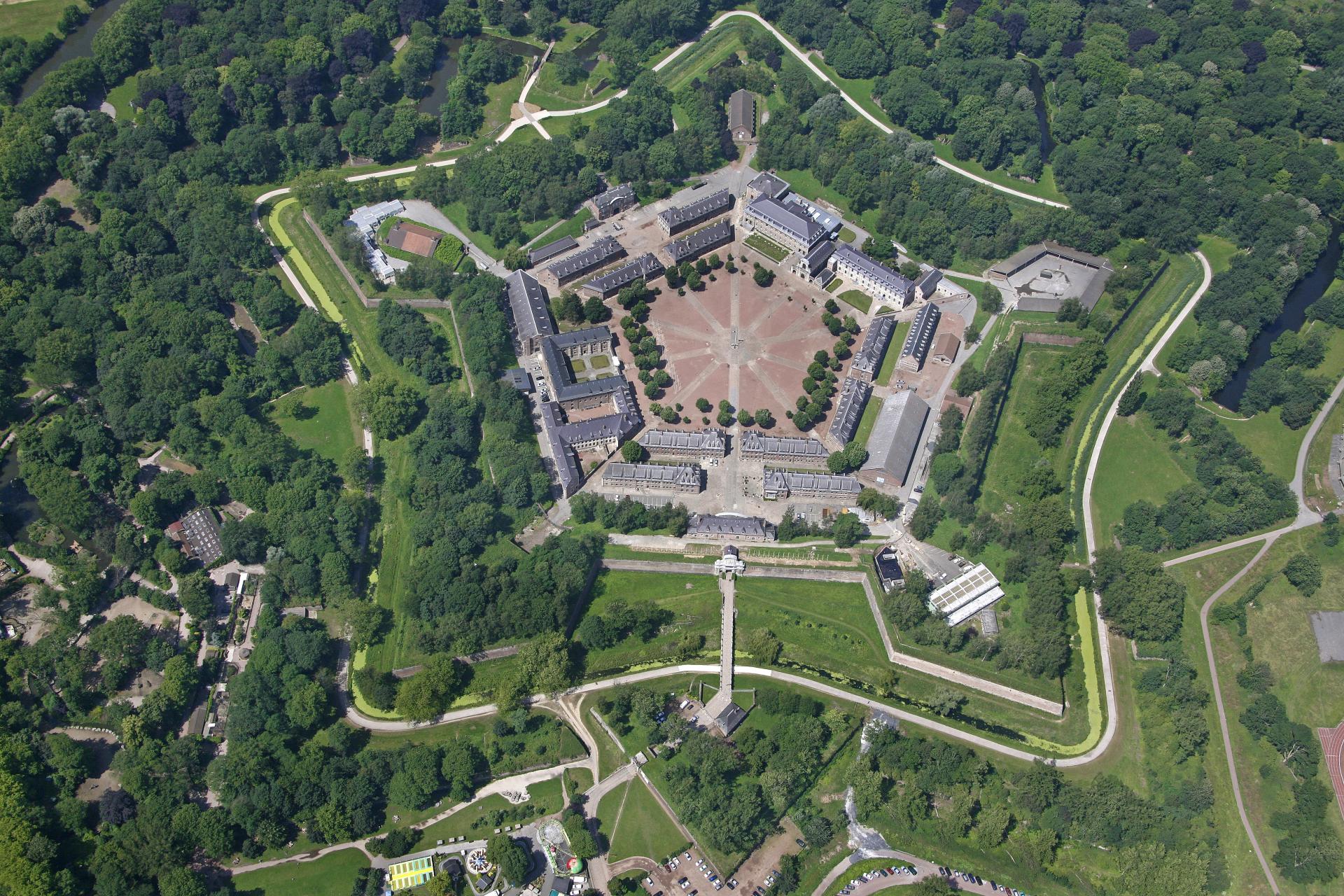Heritage
The Parc de la Citadelle is a place that’s imbued with the history of France... It’s home to the "Queen of the Citadels", built under the leadership of the Marquis de Vauban.

Lille’s Citadel, a complete history
On 2 May 1668, the signing of the Peace Treaty of Aix-la-Chapelle ended the War of Devolution, and consequently the Spanish rule over Lille. Lille became a French city! This signing was preceded by another important historical moment, the siege of Lille in which troops of Louis XIV conquered the city ending the Spanish occupation.
Built by order of Louis XIV on conquering the city, Lille’s Citadel was built between 1667 and 1670. Sébastien Le Prestre, Marquis de Vauban (1633-1707), laid the foundation stone of the Citadel on 17 June 1668. No less than three million blocks of stone, sixty million bricks and seventy thousand feet of sandstone make up the body of the place, erected in just three years (1667-1670). The nickname "Queen of the Citadels" is very appropriate.
The Queen with an iron belt that Vauban called "Pré Carré" (Private Reserve), which consisted of a vast defensive network on the northern flank of the kingdom of France and included 28 fortified cities. It was then a matter of defending Paris from its enemies who were too close. The Lille Citadel stood on the border with Flanders and was part of a double line of strongholds between Gravelines, Dunkirk and Maubeuge/Rocroi. Within this arrangement, Lille served as its spearhead, fulfilling its role to perfection during the sieges of 1708 and 1792. At a national level, this defensive cover appeared so effective that it permanently consolidated a border that could not rely on any natural barrier. Built on swampy ground, the Citadel used an ingenious system of flooding its surroundings, adding to the other obstacles in front of the city wall: ditches, tenailles and ravelin fortifications.
The Citadel returns to its former shape
Lille’s Citadel, which is part of a site listed as a historic monument, was the subject of a development project of which €5.2 million was financed by the City of Lille and 18.18 million by the European Metropolis of Lille. On the edges of the fortifications, on the city side, several elements of the historical defensive system have been reconstructed. To further improve this exceptional site, the City of Lille has applied for Lille’s Citadel to be included on the UNESCO World Heritage List.
For example, the “glacis” (sloping bank), took its former shape again at the counterguard, in line with the plans from the period 1830-1860. Once a vast open area, its slope made it difficult to adjust the canons. Other developments include the covered way, which allowed soldiers to see without being seen and firing banks. Whilst a vegetated valley along a rampart reminds visitors of the site’s former flooding system and improvements of the communication wall are easily visible. Finally, walkers can discover or rediscover how the architect Vauban designed such an ingenious defence system through the art of concealment to constantly deceive the enemy!
Today, the heart of the Citadel is closed to the public because it retains its military use: it’s home to the Rapid Reaction Corps-France (CRR-Fr). The only one of its kind, the CRR-Fr is the highest-level deployable operational unit available to the French army. 14 allied nations contribute to this unit, which has about 450 soldiers.
How to visit the Citadel?
To discover the rich heritage of the Parc de la Citadelle, all year long, Lille’s City of Art and History Department offers guided tours ledin partnership with Lille’s Tourism and Convention Office. For the tour programme, visit Lille’s Tourism and Convention Office website : www.lilletourism.com





